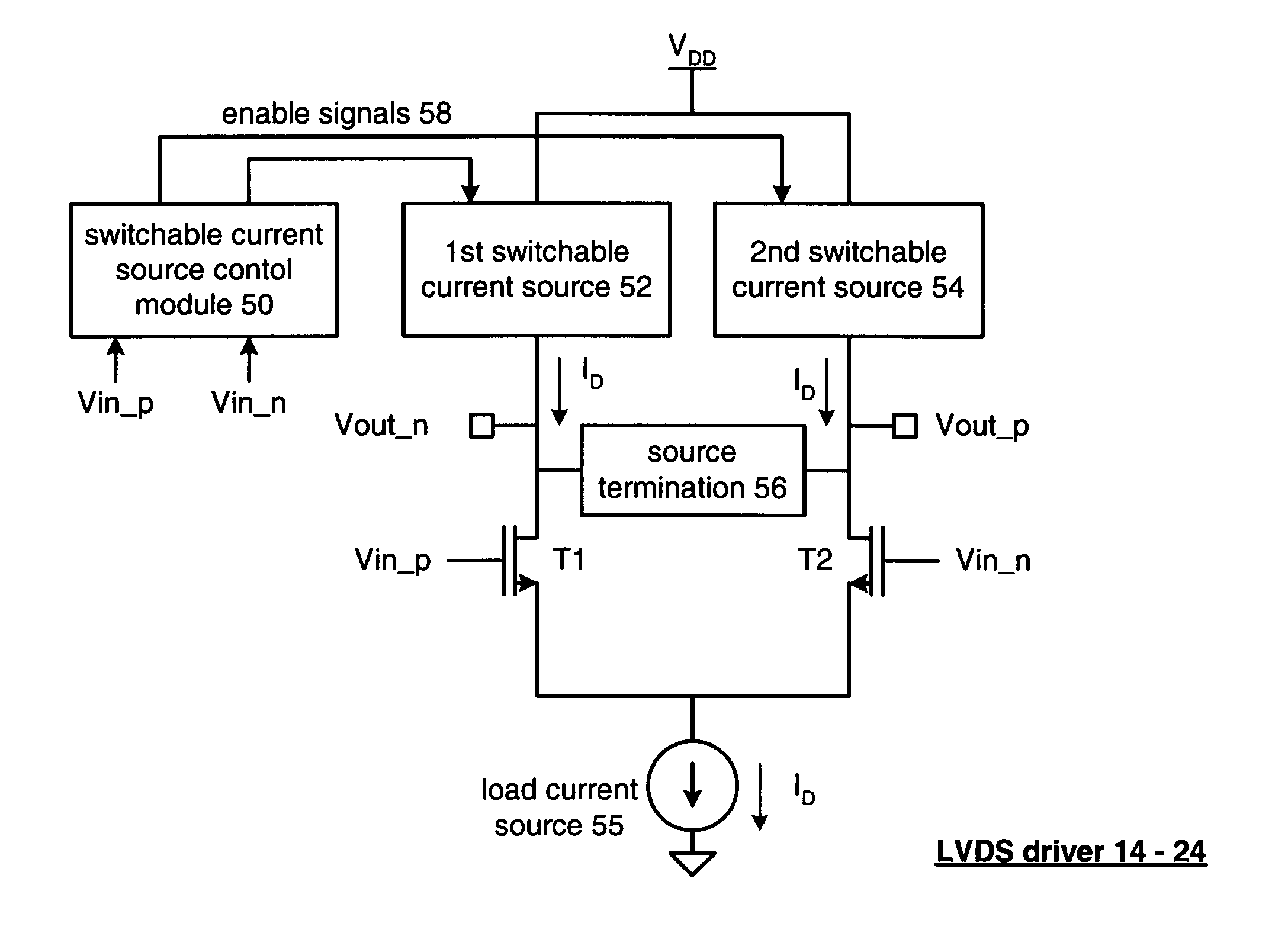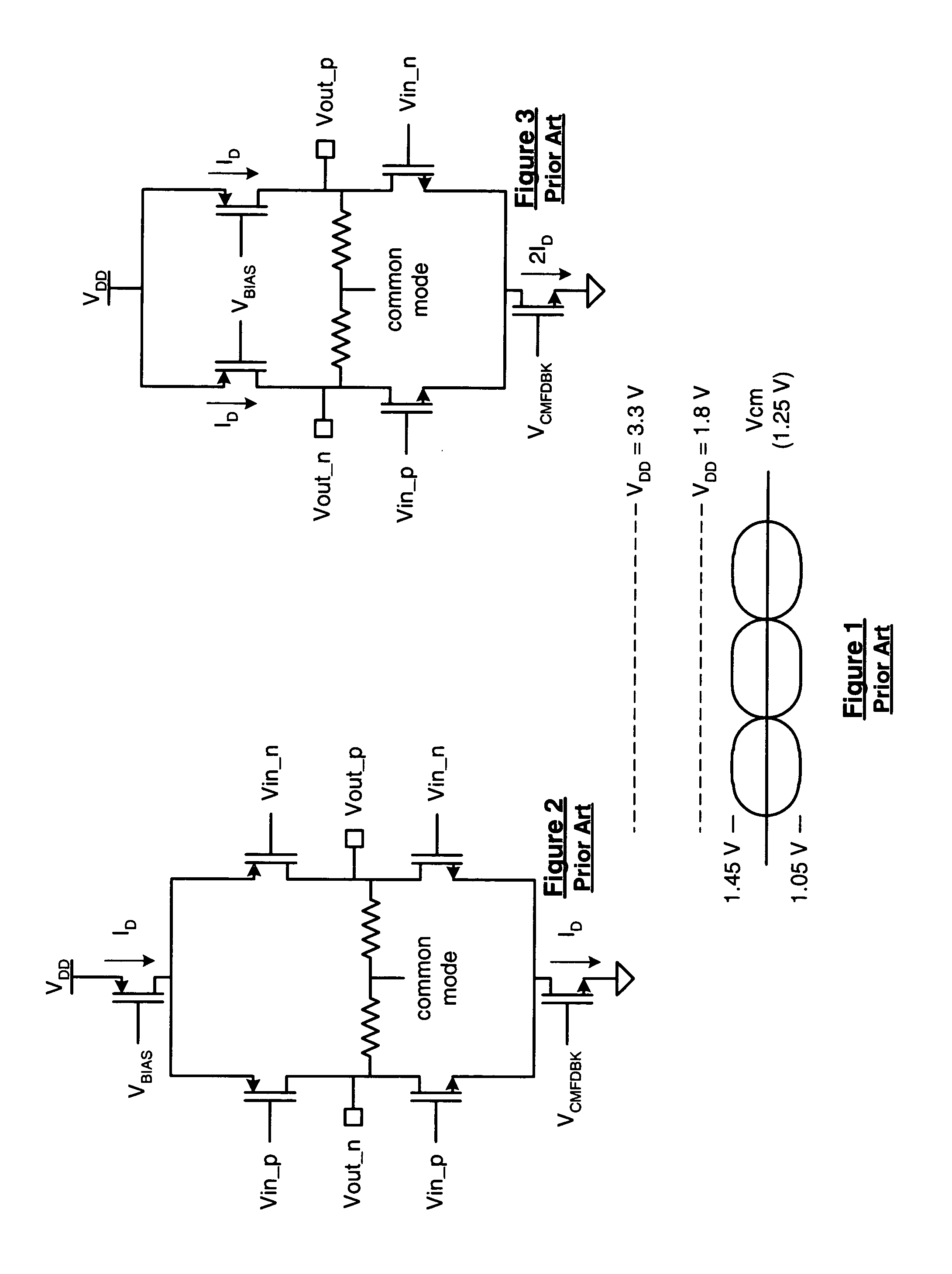Low power low voltage differential signaling driver
a low-power, differential signaling technology, applied in the field of data signaling, can solve the problems of increasing the die area requirement of the embodiment of fig. 3 and the supply voltage headroom of the stacked p-channel transistor, and reducing the power consumption of the p-channel transistor. the effect of reducing the requirement of power consumption
- Summary
- Abstract
- Description
- Claims
- Application Information
AI Technical Summary
Benefits of technology
Problems solved by technology
Method used
Image
Examples
Embodiment Construction
[0019]FIG. 4 is a schematic block diagram of an integrated circuit 10 that includes circuitry 12 and a plurality of a low voltage differential signaling (LVDS) drivers 14–24. The circuitry 12 may be analog circuitry, digital circuitry, processing circuitry and / or memory that produce a plurality of data signals 26–36. The data signals may be analog or digital signals. For example, circuitry 12 may be a programmable logic device (such as a field programmable gate array or a complex programmable logic device) comprising programmable logic blocks, programmable I / O blocks, and a programmable interconnect structure. In some embodiments, the programmable I / O blocks may include one or more LVDS drivers, such as drivers 14–24. If the data signals 26–36 are digital signals, they may represent a serial data stream having a data rate in the hundreds of megabits-per-second to gigabits-per-second. Each of the LVDS drivers 14–24 receives a corresponding data signal 26–36 and produce a correspondin...
PUM
 Login to View More
Login to View More Abstract
Description
Claims
Application Information
 Login to View More
Login to View More - R&D
- Intellectual Property
- Life Sciences
- Materials
- Tech Scout
- Unparalleled Data Quality
- Higher Quality Content
- 60% Fewer Hallucinations
Browse by: Latest US Patents, China's latest patents, Technical Efficacy Thesaurus, Application Domain, Technology Topic, Popular Technical Reports.
© 2025 PatSnap. All rights reserved.Legal|Privacy policy|Modern Slavery Act Transparency Statement|Sitemap|About US| Contact US: help@patsnap.com



